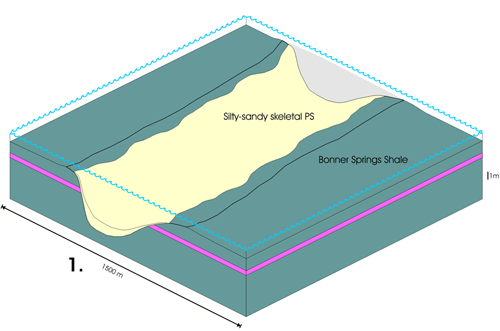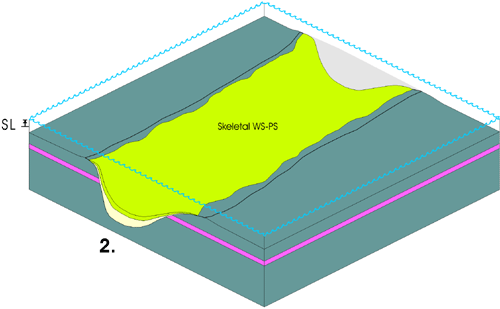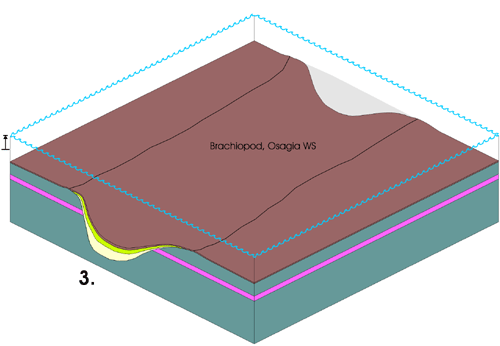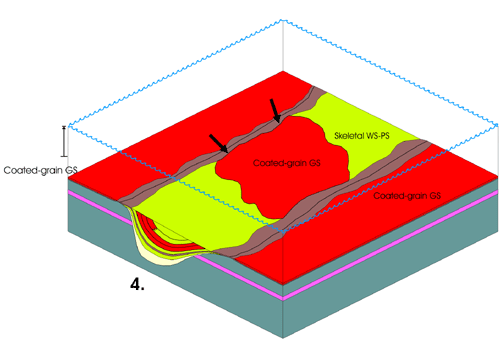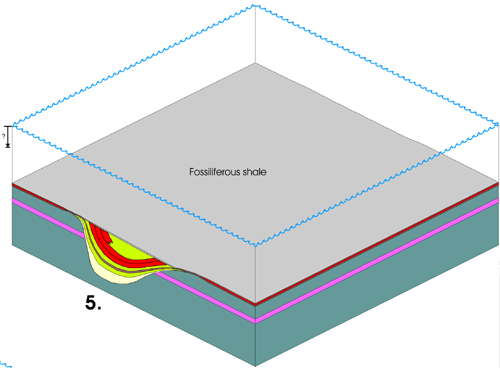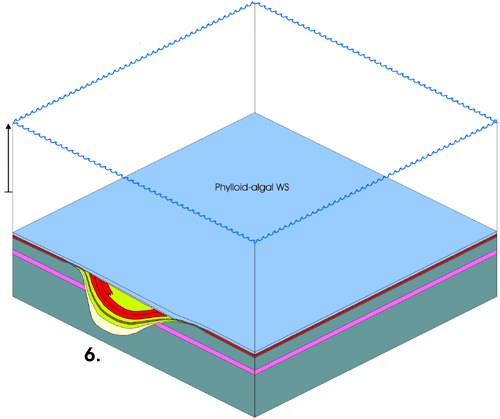Discussion
- After erosion into Bonner Springs Shale and initial transgression, the first Merriam deposits occur in channels, and drape channel margins. The facies consist of silty-sandy skeletal PS, containing Bonner Springs clasts and aligned skeletal fragments, deposited during continued transgression.
- With continued rise in sea-level, siliciclastic influx decreases, and cleaner skeletal WS-PS containing whole, unabraded fossils is deposited in channels, also draping the margins.
- Shallow-subtidal, low-energy brachiopod, Osagia WS forms in channels and on surrounding highs, blanketing paleo- topography.
- High-energy, shallow-subtidal coated-grain GS (oncoids and ooids) form on highs, with lower energy skeletal WS-PS deposited in quieter channel areas. Beds in channels locally contain coated-grains likely washed in from surrounding highs. Most accommodation in channels is filled.
- Siliciclastic influx into the area (either due to delta lobe switch or sea-level fall?) further subdues any remaining topography.
- Deeper subtidal Phylloid-algal WS are deposited over the entire area, displaying consistent thickness and facies character, indicating relief had been largely filled.
Merriam Limestone Depositional Model
|
|
|
|
|
e-mail : webadmin@kgs.ku.edu
Last updated May 2003
http://www.kgs.ku.edu/PRS/publication/2003/ofr2003-26/P3-02.html

